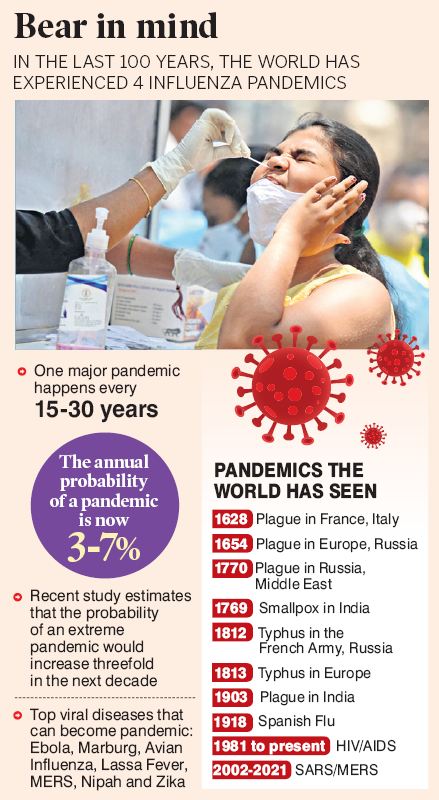Health and Tech: Predicting future pandemics
Statisticians worldwide have started calculating the probability of a Covid-like extreme event happening in the years to come

Hyderabad: It took three-years for the Covid-19 pandemic to recede, although there is always a threat looming large from the ever evolving new variants of coronavirus. The Covid pandemic has clearly indicated that intense epidemic events are here to stay and there is a need to be prepared for such exigencies.
In the last couple of years, statisticians worldwide have started calculating the probability of such an extreme event happening in the future. A recent study that analyzed infectious disease outbreaks of the past 400 years, published in Proceedings of National Academy of Sciences (PNAS), said that the annual probability of extreme epidemics occurring could increase threefold in the coming decades.
In the study published in PNAS, researchers found that the probability of a pandemic with a similar impact of Covid-19 is about 2 percent in any year. “We estimate that the yearly probability of occurrence of extreme epidemics can increase up to threefold in the coming decades,” they said.

So what are the top or most likely scenarios that can trigger an intense pandemic in the coming years? Based on the observations from public health experts from across the world including India and from organizations like WHO, these are most likely scenarios that can provide clues to people on taking precautions and be prepared for future pandemics:
Spillover infections/ Bird Flu or Avian influenza
The bird flu/ Avian influenza caused by H5N1 virus is a classic example of spillover infections in which the virus has managed to overcome multiple barriers and jumped between species. The bird flu (H5N1) started in poultry feed and then managed to jump to mammals and in recent months, there have been instances of humans too getting infected.
While the mortality rate from Covid-19 was below 1 per cent, the mortality rate of H5N1 (Influenza Virus) is 10 per cent, which would pose a major challenge to the public health systems worldwide.
Ebola/Marburg/ MERS
According to noted science journal nature.com, over the past 23 years, globally influenza, Middle East Respiratory Syndrome (MERS) and Ebola, have been responsible for more outbreaks than any other infectious disease.
Recently, the WHO has confirmed yet another outbreak of an infection known as Marburg Virus Disease (MVD) in African countries. The MVD is caused by Marbug virus, which is a genetically unique zoonotic (or animal-borne) RNA virus of the filovirus family. The six species of Ebola virus are the only other known members of the filovirus family.
Climate Change
Change in climatic conditions like heating or flooding encourages rampant mosquito breeding, which leads to rise in vector borne diseases like malaria, dengue etc.
Researchers across the world predict that rising temperatures will force wild animals to relocate to areas where humans already exist, thus increasing the risk of the viral jump from the animals to humans and triggering epidemics.








